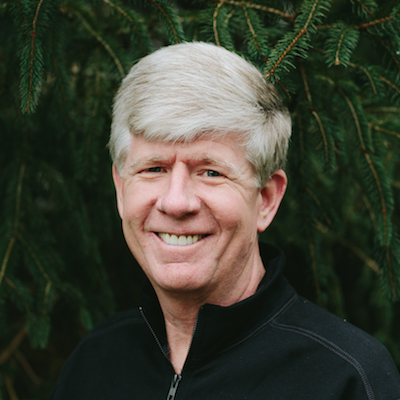As I’ve tried to deal with change over the years, I have found that change can be challenging! Some people look forward to change and embrace it. Some people dread change and try to avoid it. Regardless of how you view change, we know that change is inevitable, so let’s look together at some of the dynamics surrounding change and the specific strategies we can use to deal with those dynamics. I think a greater understanding of these dynamics can help all of us deal with change more effectively.
Nine Dynamics of Change
1. The first dynamic is, when we’re going through change, we feel awkward, ill-at-ease, self-conscious. For every dynamic, we’re going to need a strategy. So what’s the strategy to overcome that dynamic? You need to know what to expect, and I say, expect the unexpected. Let’s talk about some of what you can expect as we think about this strategy, why change can be hard, what keeps us from changing, and how to deal with that. For example, did anyone ever expect anything like the pandemic that we’re experiencing right now, an epidemic that would turn the world as we know it upside down? This epidemic is causing all of us to go through change. So now that we are experiencing the completely unexpected and may have to continue dealing with this situation for months or even years, what has to change and what has to be different. To answer those questions, I ask myself three other questions: what am I learning, what do I want to keep and take with me, and what do I want to leave behind. As I find answers to these questions, I have changed my thinking into expectation and no longer feel so helpless and uncomfortable.
2. The second dynamic of change is that we feel alone. For any of us who are going through change, many times we think we’re the only ones going through it. So, what’s the strategy? Structure activities that create involvement. For example, when you host a meeting with your team, have dinner with your family, have a one-on-one meeting, or coach a team, using the W.A.D.E.L. model engages everyone. This model consists of intentionally Welcoming each person to the meeting, Asking questions, Discussing the agenda items that need discussing, Empowering people to fulfill their roles, and Launching people with positive encouragement at the end of the meeting when they leave the meeting.
3. The third dynamic in a changing world is we will be faced with behaviors that we have to give up. The strategy? Identify what you need to give up. It could be things and/or behaviors, and I say go for the biggest problem first. One simple tool that I call the self-evaluation tool is a way to look at ourselves and identify in a T-chart both our positive and negative thoughts, feelings, and behaviors that guide us so we keep the positives and mitigate the negatives. Another tool I call the gas tank T-chart is where you think about what fills your gas tank, what keeps you going, and what empties your tank. As we distinguish those things, people, and/or activities that are fillers and emptiers that either fill up our gas tank or empty us, we can make choices about what we need to give up or keep. We may even discover that some of those fillers and emptiers may even fall on both sides of the T-chart.
4. The fourth dynamic is we’ll be concerned that we don’t have enough resources. What’s the strategy? We have to get creative. You’ve probably heard the phrase outside-the-box thinking. Here’s the reason why outside-the-box thinking doesn’t work. When we get outside the box and it gets uncomfortable, we crawl back into the old box as fast as we can because we are still too connected to the familiar walls of that old box. Since change is constant, the external pressures on the outside of us or the internal turmoil inside us can change as rapidly as bubbles that form and then burst when the external or internal pressure changes. That’s why I think this strategy calls for us to learn how to think beyond the box and learn how to bubble jump so we develop a whole other way of thinking that is beyond the bubble.
5. The fifth dynamic is that you can only handle so much change at once. The strategy is to set priorities and go for the long run. What I call the VPMOSA helps with that by identifying the Vision, Purpose, Mission, Objectives, Strategies, and Actions that will move us toward our end goal. This strategy will help bring balance. It’ll help show and manage the different spheres that you operate in and how to keep that balance with your family, your job, your ministry, or whatever it is you’re doing and show how they’re all connected together.
6. The sixth dynamic: People are at different levels of readiness for change. The strategy we use is to go for the toughest area first. Some people say do something easy first to get some practice and then go for the tough one, but I don’t agree with that. The reason I say to go for the toughest one first is because, typically, when you’re dealing with the easier ones, they’re just a symptom of the toughest one. I recommend doing a personal evaluation. Think of something in your life that if you made a change in that area you would be a better mother, father, spouse, boss, employee, or friend. Write down what you think you should change and then ask yourself if you can take responsibility for being that way. Can you own the fact that you are that way? If you can, write down an action step that you could take toward changing it and make a commitment to making that change.
7. The seventh dynamic is that you revert back to old behaviors when the pressure is off. Many times when we are trying to go through change and we get uncomfortable, we go back to the old way. What’s the strategy? It’s a concept I call bumper buddies, bumper people, people who can bump you back on track to accomplish your goal if it gets uncomfortable or if you get off track. Bumper people can help you stay focused as you share your findings from your self-evaluation tool of T-charts that identify both positive and negative thoughts, feelings, and behaviors and the gas tank T-chart where you think about what fills your gas tank and what empties your tank by identifying fillers and emptiers in your life. Your bumper buddies can speak truth to you about those two sides of the T-charts when you begin to stray from your goal. Another tool that can help us from reverting to our old ways is what I call TFA. That stands for Thoughts, Feelings, and Actions, where we identify the thought and then change the thought if it needs changing, which then changes the feeling, which leads to a change of behavior and action. These are life-changing tools that will really help as you interact with your bumper buddies.
8. The eighth dynamic of change is that change can be fun. Most people don’t teach that as a dynamic, but I have found that change can be fun if we use the strategy where we embrace the change and do it with others who also embrace it. As we cross over into new ways of thinking, this new thinking is a bridge of transformation that shows us how to get over that bridge. What happens if we don’t cross that bridge is that many of us stay in what we call the river of complication. But when we decide to cross that bridge, then we will find that we have complicated what has always been extremely simple, but not easy, because we have been swimming in the river of complication. But when we cross the bridge of transformation, what has always been simple now becomes easy-er. We find out it’s not only the what that keeps us from crossing that bridge. It’s also the how to get over that bridge, and that leads us to an action plan that incorporates the personal evaluation T-charts; TFA; W.A.D.E.L.; a social covenant where we decide how we are going to treat each other; an intentional 6-step apology where we confess our offense, admit we were wrong, and ask for forgiveness and accountability; and our VPMOSA.
9. The ninth dynamic is that change is a choice. So, change is a choice, and not to change is also a choice. What’s the strategy? Use those bumper buddies that we talked about, those bumper people, to encourage you if you feel guilty, if you fail, or if you falter.
We know change is a constant. We live in a world of almost constant change. We experience changes in our culture, in our work, in our finances, in our relationships, and even in ourselves. As we talk about dealing with those changes, it’s helpful to understand these dynamics of change and know that these strategies help us all deal effectively with change so that we become transformational leaders.
Ford Taylor is a leadership strategist, keynote speaker, and the author of Relactional Leadership. As the Founder of Transformational Leadership, he is known as a man who can solve complex business issues, with straightforward practical solutions, while maintaining his focus on people.



